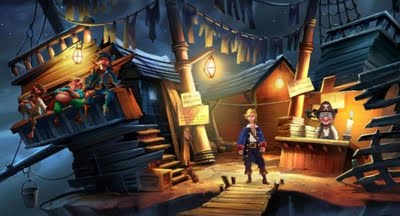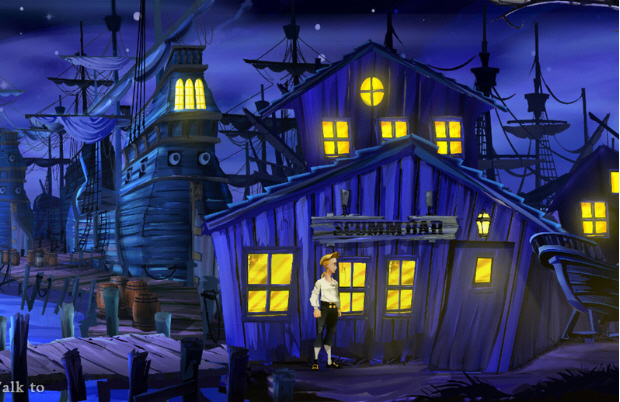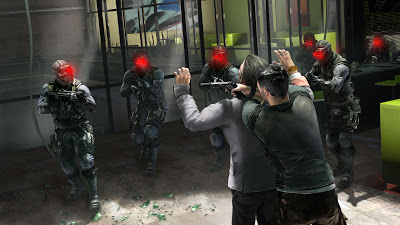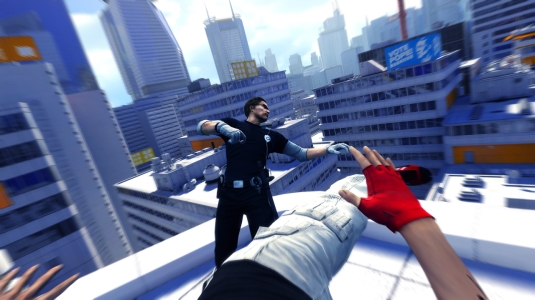
It’s pretty obvious from the outset what the main selling point of From Russia With Love is, and it’s not the usual girls, gadgets and explosions that are the main focus in most James Bond games. Although all of these things are present and correct, the element that makes this edition into the ever-lengthening 007 franchise so appealing to fans is that old Scottish front-man, Sean Connery.
Does the presence of Sir Sean elevate this game above its predecessors? Let’s find out.
I Loved:
Sir Sean: Most true Bond fans will probably tell you that their favourite actor to portray everyone’s beloved vodka-swilling, womanizing spy is Sean Connery, and as such his being in the game was always going to be a well-received addition. Personally, I thought his physical reconstruction and mannerisms were both top-notch, even down to his trademark shooting from the hip. EA did well to recreate that classic feel of the FRWL movie, and Sir Sean being in the driving seat really helps to bring that nostalgic presentation together.
Close-Combat: I’ve always thought that Bond (especially the early Bond) isn’t particularly talented at hand-to-hand combat — most of the time he’s getting his arse handed to him. In this game, however, he does have access to some pretty nifty attacks when enemies get too close for comfort. A few of the game’s areas are engineered to specifically suit stealth play, and it is definitely satisfying to creep up behind a bad guy and grab him in a silent chokehold. There is also a handy feature for quickly dispatching close-range enemies: when Bond is in pistol-whip range, pressing the fire button will give the enemy a smack and then one of the four face buttons will pop up on screen. If you hit the correct button at the correct time then that enemy will get the good news with a James Bond special and won’t be troubling you for much longer. It’s not the most advanced of gameplay elements, but it helps to break up the action and some of the moves are fun to watch Sean Connery perform.
Gadgets: A lot of the time in Bond games the gadgets can be overlooked, and although that is the case here in some respects, a couple of the toys are pretty decent. The Q-Copter for one is a nice inclusion; it’s basically a remote-controlled helicopter which allows Bond to reconnoitre areas, but it can also be used as a weapon when it detonates. There is also the inclusion of a rappel device, but it’s more of a hook on a rope than the modern, more versatile version seen in Everything or Nothing. In FRWL it’s used more as a method of getting from Point A to Point B, but it’s always entertaining to swing through a window and come crashing down on an enemy’s head.
Vehicle Sections: This being a third person shooter (and, more appropriately, a Bond game) vehicle sections were always going to be involved. Usually for me this kind of thing feels slightly forced, but in this game the various vehicles on offer add variety to the gameplay as well as provide an exciting, visceral few moments of speed. Even the controls are nice and tight, which is unusual but definitely a bonus. In FRWL Bond gets to drive a car, a boat and commandeer a jetpack, all of which come complete with a lovely selection of ordnance to blow away everything else that gets anywhere near.
The Audio: If the game handles one thing really, really well then it has to be the audio. Aside from Bond himself being a little unenthusiastic, the other characters are really well-voiced and aid to the credibility of the game world. Similarly, the sound effects are great, with lots of realistic explosions and gunfire. Aside from some occasional balancing issues, the audio is probably the most standout feature of the game for me.
I Hated:
Sir Sean: Although as I’ve already mentioned the presence of the good knight is a blessing at times, it can also be a tad irritating. Sean Connery is an old man now and Christ doesn’t he sound like one — most of the time his lines sound like something granddad would say in front of the mirror. He still delivers his most iconic catchphrases with some personality, but these don’t come often enough to convince the player that we have a younger, fitter Sean running around on screen. As much of a legend as Sean Connery is, it doesn’t befit an action game to have the lines of the protagonist delivered by a geriatric.
The Difficulty: Most of the time FRWL feels like a training mission. Even on the hardest difficulty, there is very little challenge here. It’s so easy to just hold down lock-on and hammer the fire button that everything else seems a little pointless. You could slow down time and shoot a grenade out of someone’s hand, but why bother when you can jog up to him and smack him around twice as fast? Even if an enemy manages to invade your personal space, he’s only a couple of button presses away from an instant kill. In Everything or Nothing you weren’t particularly challenged, but that was to maintain the modern action-movie style and keep things fluid — in comparison, FRWL feels a little stale.
The Storyline: If you’re a fan of the film you might be disappointed in some parts with this game, seeing as a good portion of the plot is missing or has been changed in some way. Even the introduction to the game is tacked on and bears pretty much no relevance to the storyline, and the same can be said of the closing scenes. Even the scene from the movie where Bond must dodge an attacking helicopter is conspicuously absent from the game, and the train scene, perhaps one of the movie’s most memorable moments, has been completely changed. Some familiar scenarios are still present, such as the shootout at the gypsy camp and the daring heist in the Russian consulate, but they are too few and far between to maintain a real feel of the film. Note to developers who want to translate a movie to a game: sticking to the bare bones of the plot and skipping or altering some of the better parts is NOT a good idea.
The Multiplayer: FRWL is one of those games that feels it simply must include a multiplayer component, however under-developed and generally shite it is. All the usual suspects are there — deathmatch, a variant on capture the flag, even a mode in which every player has a jetpack. But as is the nature of these things, it all plays out the same; hold down lock-on and hammer the fire button until someone falls over. It doesn’t have the tactical elements of decent multiplayer titles, the maps are unimaginative and this kind of gameplay just doesn’t translate all that well when playing against actual human opponents. In my opinion, the multiplayer shouldn’t have been present.
So there you have it — a reasonably fun if unremarkable TPS. FRWL doesn’t do anything different and what it does do isn’t the best in the genre by a long way, but it’s functional enough to provide an entertaining experience while it lasts, which thankfully isn’t long.








